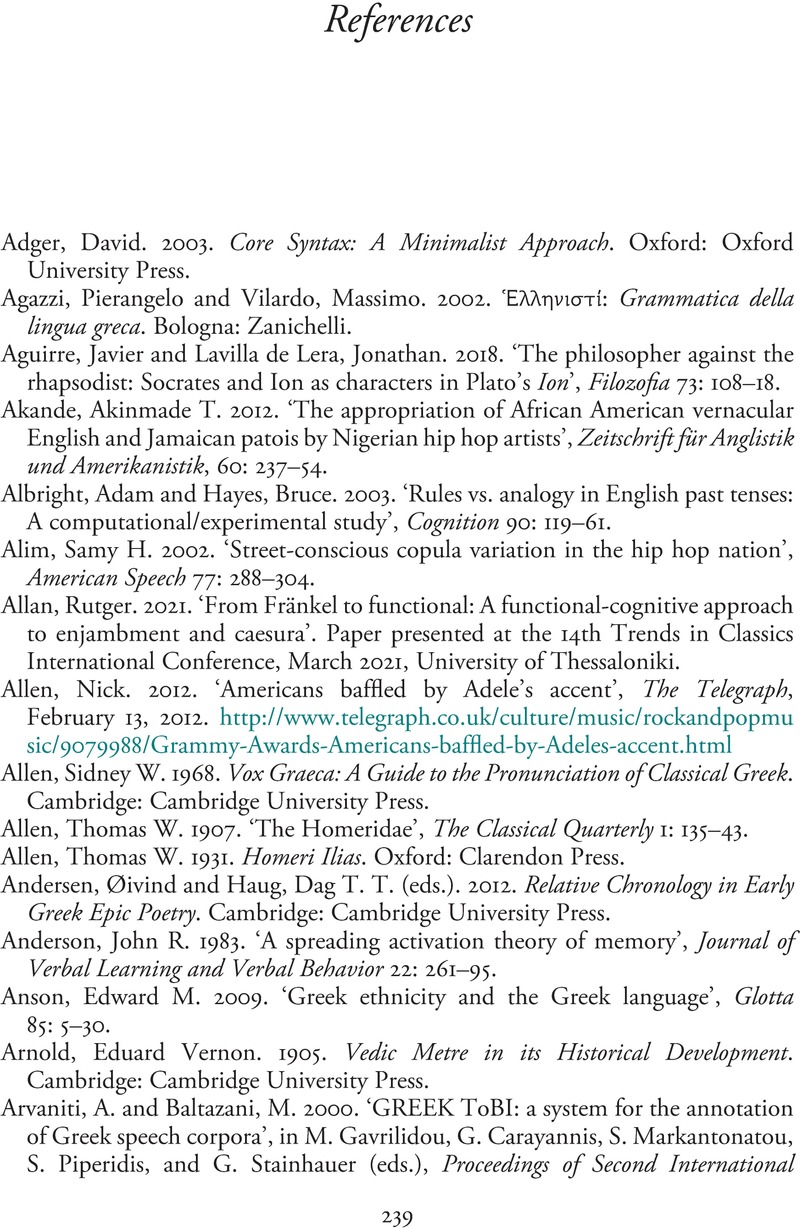Book contents
- Homer’s Living Language
- Homer’s Living Language
- Copyright page
- Dedication
- Contents
- Figures
- Tables
- Acknowledgments
- Note on the Transliteration
- Abbreviations
- Introduction The Paradox of Homeric Creativity
- Chapter 1 Formularity
- Chapter 2 Meter
- Chapter 3 Dialect
- Chapter 4 Creativity
- Conclusion Creativity, Memory, and the Muses
- Glossary of Linguistic Terms
- References
- Index Locorum
- General Index
- Index of Homeric forms
- Index of PIE forms
- Index of Homeric phraseology
- References
References
Published online by Cambridge University Press: 11 April 2024
- Homer’s Living Language
- Homer’s Living Language
- Copyright page
- Dedication
- Contents
- Figures
- Tables
- Acknowledgments
- Note on the Transliteration
- Abbreviations
- Introduction The Paradox of Homeric Creativity
- Chapter 1 Formularity
- Chapter 2 Meter
- Chapter 3 Dialect
- Chapter 4 Creativity
- Conclusion Creativity, Memory, and the Muses
- Glossary of Linguistic Terms
- References
- Index Locorum
- General Index
- Index of Homeric forms
- Index of PIE forms
- Index of Homeric phraseology
- References
Summary

- Type
- Chapter
- Information
- Homer's Living LanguageFormularity, Dialect, and Creativity in Oral-Traditional Poetry, pp. 239 - 265Publisher: Cambridge University PressPrint publication year: 2024



